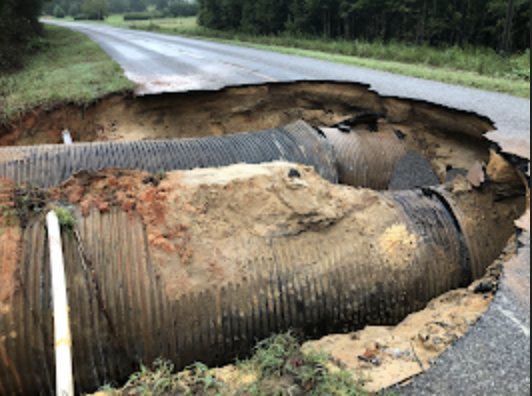When the rubber leaves the pavement
Published 12:00 am Wednesday, August 8, 2001
One Greenville resident was lucky to get away with his life last Tuesday, after his 1997 Chevy began to hydroplane just north of Greenville.
&uot;We were responding to a reported motor vehicle accident near the county line, on Ala. Hwy. 263 North, during a light rainstorm on Tuesday evening,&uot; said Coroner Wayne Garlock, who is also a paramedic and owner/operator of GEMS Ambulance Service. &uot;I looked into my rear view mirror, and I saw a car skid through a wet spot on the road in a flat, and the vehicle went off the road to the west.&uot;
Garlock radioed to the Butler County Emergency Communications District that he had just seen a wreck, and was advised that Greenville police units, responding to the original call for a wreck informed the ambulance unit there were no injuries at their destination.
&uot;We turned around and began to look for the vehicle,&uot; Garlock said.
Approximately three minutes later, Garlock had located the car.
The driver had gotten himself out of the car, but not before what must have been a hair-raising ride ensued.
Responding to investigate the accident, an Alabama State Trooper said the situation was one he had seen before.
&uot;Hydroplaning, that is what it is called,&uot; said Trooper Ellis Farley, of the Evergreen Post, Alabama Department of Public Safety (DPS). &uot;That is when a vehicle's tires lose contact with the pavement of the road, due to a sheet of water between the tire and the road.&uot;
The phenomenon Farley described is caused from a sudden loss of friction (what keeps the tire grabbing the pavement) as the water gets between the tire and the road.
&uot;This driver was very lucky; he could just as easily have been killed,&uot; Farley said.
When the team from GEMS reached the victim, Eric Devond Clemmons, 22, from Greenville, he was making his way up the embankment.
Tracks at the scene show Clemmons' vehicle left the pavement, and traveled some 300 feet or more before it launched over an embankement of a low-lying creek. The creek was at least 75 feet lower than the roadway in elevation. The vehicle came to a stop after it landed on the far side of the 20-foot wide creek.
&uot;The victim was complaining of back pain,&uot; Garlock said. &uot;We placed him on our trauma equipment and transported him to L.V. Stabler Memorial Hospital, where he was examined by emergency physicians.&uot;
Evidence at the scene indicated that air bag safety equipment was deployed at the time of impact.
&uot;This is a good example of why it is important to slow down more than usual when the road is wet,&uot; the trooper said.


